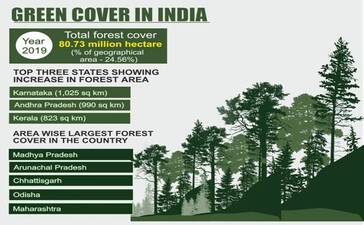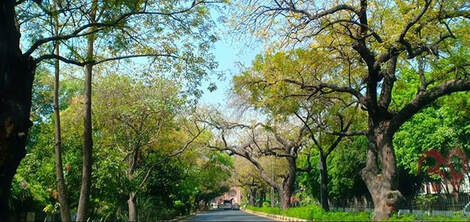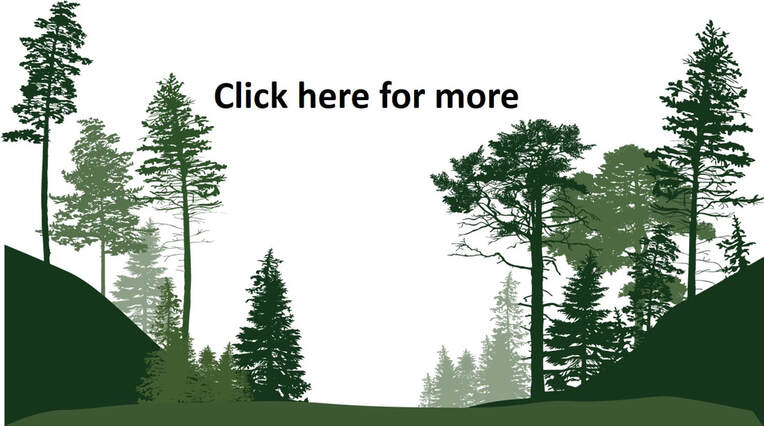Evidence that Tree Cover is Increasing Outside of Forests

The “future of trees is on farms”. There is growing expert opinion that while forests world-wide are being converted and degraded, tree cover outside of forests may be increasing at a rapid pace. Scientific and government reports are calling attention to a new trend in land cover change where biomass in tree cover is increasing in small holder agricultural landscapes outside national recorded forest areas (RFA). For instance, India’s recent State of the Forest Report, reports a national increase in forest area, with most of the increase attributed to tree cover outside the RFA.
Conventional wisdom for more than two decades has been to see land cover change in Asia through a lens of agricultural expansion and concomitant loss of natural ecosystems. Moreover, land degradation is viewed as a dominant characteristic of agricultural land use in Asia. When viewed this way we often overlook how significant an increase in tree cover in small holder agricultural landscapes is to our understanding of carbon sequestration, new transitions and drivers of land cover change, and the needs of policy and development communities. The TOF issue is central to understanding where and how natural ecosystem conversion trends and land degradation are being, or can be, reversed – with significant benefits to small-holders’ livelihoods and their land productivity.
Conventional wisdom for more than two decades has been to see land cover change in Asia through a lens of agricultural expansion and concomitant loss of natural ecosystems. Moreover, land degradation is viewed as a dominant characteristic of agricultural land use in Asia. When viewed this way we often overlook how significant an increase in tree cover in small holder agricultural landscapes is to our understanding of carbon sequestration, new transitions and drivers of land cover change, and the needs of policy and development communities. The TOF issue is central to understanding where and how natural ecosystem conversion trends and land degradation are being, or can be, reversed – with significant benefits to small-holders’ livelihoods and their land productivity.
The Importance of Trees Outside of Forests

Systems of trees outside of forests (TOF) include agroforestry complexes, small-holder plantations, orchards, energy farms and woodlots, hedgerows and shelterbelts, scattered individual trees and other woody perennial establishments in predominantly small holder agricultural landscapes. The utilization of trees on farms provides natural products and direct economic value to land managers as well as a range of indirect co-benefits, including water retention, increased site fertility and productivity, animal fodder, domestic energy from fuelwood and charcoal, biodiversity and more. TOF systems enable small-holders to create a diversified portfolio of products other than annual crops alone, often with significantly higher economic value compared to annual crops. TOF systems also sequester and store carbon and buffer against adverse impacts of climate change.
Increased Trees Outside of Forest Promoted by Farmers
Small holders, generally in semi-arid agricultural landscapes, promote the establishment of TOF to capture the value of ecosystem services (ES), which include (a) perceived or realized co-benefits of trees, such as increasing water retention, and (b) direct value from tree products, such as food and fuel.
This project objectives focus on this idea:
(Obj 1) Develop and deploy a remote sensing detection and inventory approach to TOFs in agricultural land, with a focus on mapping individual trees and small tree patches which are not in forest. This objective will be able to quantify a trend of increasing tree cover in agricultural landscapes.
(Obj 2) Integrate methods from economic analysis to determine the factors that are driving these trends using quantitative econometric valuation of ecosystem services (including tree products) to ascertain if there is a correlation between increases in tree cover and high financial valuation of ES (positive model with use values).
This project objectives focus on this idea:
(Obj 1) Develop and deploy a remote sensing detection and inventory approach to TOFs in agricultural land, with a focus on mapping individual trees and small tree patches which are not in forest. This objective will be able to quantify a trend of increasing tree cover in agricultural landscapes.
(Obj 2) Integrate methods from economic analysis to determine the factors that are driving these trends using quantitative econometric valuation of ecosystem services (including tree products) to ascertain if there is a correlation between increases in tree cover and high financial valuation of ES (positive model with use values).
